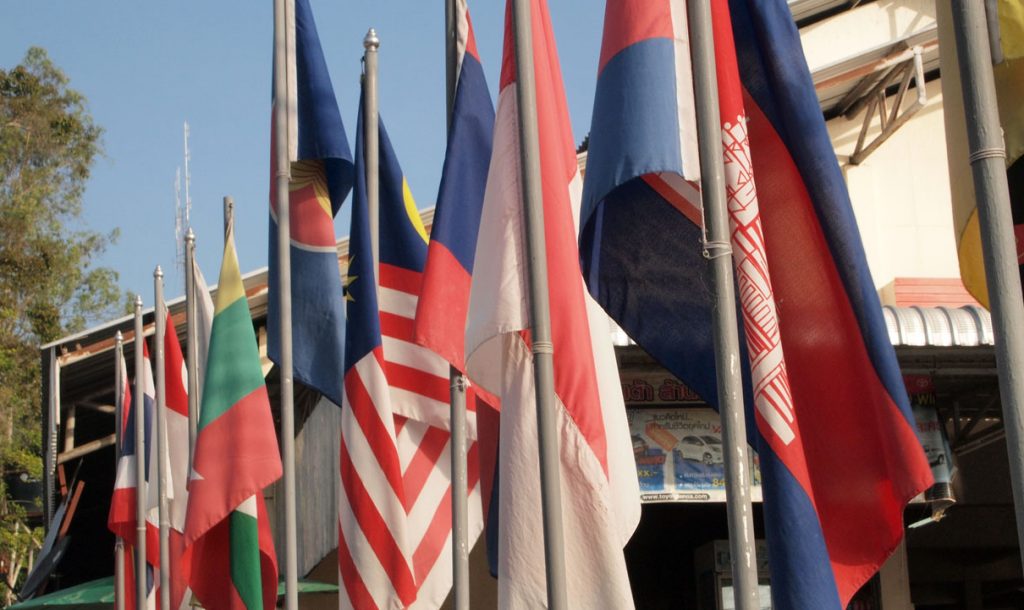With Cambodia and Laos as loyal allies of China, Southeast Asia needs a new approach to effective security cooperation. Now, a scandal caused by a retired Singaporean diplomat has opened the door for an overdue debate.
In October, Singapore’s Bilahari Kausikan participated in a public digital round table discussion, where he mentioned the possibility that the Association of Southeast Asian Nations (ASEAN) might one day be forced to expel Cambodia and Laos due to their close relationship with the People’s Republic of China. From his point of view, both states subordinate their loyalty to fellow ASEAN member states to Chinese interests in the region. In a publication based on the webinar, the former diplomat further states that “neutrality does not mean lying low and hoping for the best.”
While it is no secret that this perception is shared by several ASEAN member states, his statements hit Chinese and Cambodian nerves. Actors from both states quickly rebuffed and harshly condemned his remarks.
The undiplomatic reactions are a reminder of how challenging cooperation in Southeast Asia has often been. Founded by Thailand, Singapore, Indonesia, Malaysia and the Philippines in 1967, containing communism was the lowest common denominator that led to the creation of ASEAN. It was sufficient for about 25 years until the 1990s when Vietnam, Laos, Myanmar and finally Cambodia joined the block after Brunei Darussalam did so in 1984. Not only did the end of the Soviet-driven communist threat fundamentally change ASEAN’s self-conception, but also challenges emerging from the new multipolar world (dis)order.
Since then, ASEAN has tried hard to develop a robust common fundament in order to contain its inherent centrifugal powers. While there have been some common interests, mainly regarding economic cooperation that led to the establishment of the ASEAN Economic Community in 2015, several other issues have only reached the status of gesture politics. Often, ASEAN’s motto “One Vision, One Identity, One Community” has appeared more as a promise than reality. Today, the organisation has never been further away from its self-proclaimed ambition in 2007 to become “an EU-style community”.
It is fair to say that this ambition of reaching the EU’s degree of integration has been an illusion from the very beginning. To put the source of division in a nutshell: the geo-strategic interests of its member states are far apart from each other. It was a kind of self-deception that major Southeast Asian stakeholders ignored this fact, although it is rooted in century-old traditions. The dream of enhanced regional integration abruptly ended in 2012 when for the first time in history an ASEAN summit ended without a common communiqué.
This was no small matter. At this time, Cambodia was not only the host, but also the main driver for this failure. By blocking the communiqué, for the first time an ASEAN member state made absolutely clear that it prioritises the political ambitions of an external ally over the vital security interests of its immediate neighbours. With the principle of unanimity underlying ASEAN’s decisions, any state has a veto right on any issue. Due to Cambodia’s high dependency on—officially unconditional—Chinese aid, the People’s Republic became a de-facto member of ASEAN. In recent years, by receiving enormous Chinese development assistance, Laos became a second gateway for China into the organisation.
The main driver of China’s ambitions lies in its maritime claims in the South China Sea. They overlap with most claims of its Southeast Asian neighbours, mainly Vietnam and the Philippines, but also Malaysia and Brunei Darussalam. It has always been a clear objective of China not to multilateralise this dispute. According to the Bertelsmann Transformation Index 2020, the Cambodian government has adopted the Chinese standpoint. The report states: “In the context of large-scale Chinese assistance and its influence as the most important bilateral partner, Cambodia remains a strong backer of Chinese interests in international relations.” Via Cambodia and Laos, the People’s Republic keeps ASEAN out of the South China Sea issue. For the rest of the region, the neutrality of the two states is little more than a smokescreen. But maritime claims are just one part of recent developments.
Since last year, Chinese military ambitions in the Gulf of Thailand (northwest of the South China Sea, neighbouring Cambodia, Malaysia, Vietnam, and Cambodia) became obvious. There is some evidence that China has been granted exclusive access to part of Cambodia’s Ream Naval Base for 30 years. There is further indication that the Dara Sakor International Airport in southern Cambodia could emerge as a Chinese airbase. If these plans materialise, China would increase its military presence and influence in Southeast Asia significantly. In the context of its offensive approach in the South China Sea, these potential moves considerably affect Southeast Asia’s security architecture.
One can understand why several ASEAN member states want to revive regional governance: with the emergence of an aggressive superpower in the neighbourhood, the need for enhanced security cooperation becomes inevitable. As Bilahari Kausikan indicated, this will not be possible within ASEAN due to China’s close relations with Cambodia and Laos. Due to its internal structures, the organisation is widely incapable of action for such an evolvement. However, to conclude that both countries have to forfeit their membership in the regional body bears too grave consequences. Especially, such a radical decision would violate economic integration in the region and cooperation in other less controversial policy fields. Despite any well-founded security needs, this cannot reflect the interests of the other Southeast Asian states.
The states involved should therefore not use ASEAN to address China’s military presence in the region. Instead, a steady and binding cooperation could better be achieved by a coalition of the willing. Europe is an excellent role model as it divides economic cooperation along with political integration and judicial harmonisation (the EU) from military cooperation (NATO). This double pillar model allows much more flexibility for cooperation and reduces pressure in negotiating complete packages. Despite patterns of reduced mutual trust among Southeast Asian nations—“strategic trust” at its best—when compared to Europe as a much more homogenous region, there is no indication why a similar alliance with a clear defensive approach could not be established.
Furthermore, four years of Trumpism made obvious that there are growing isolationist tendencies in American foreign policy. Although it is likely that the new president Joseph Biden will return the United States to a more active agenda in global affairs, the next four years could be just enough time to form a collective defence mechanism in Southeast Asia until the pendulum possibly swings in the other direction again. In any case, a security alliance that does not perceive the USA and its allies as opponents would be a much more attractive partner for solving global security issues than the currently limited possibilities of any single state in Southeast Asia.
In the worst foreign policy scenario—a new cold war with the United States and China as main opponents—a deeper security cooperation would become even more essential. Regional cooperation in Southeast Asia could return to its roots: containing an externally driven encroachment. However, the consequences for Southeast Asia would be considerable and a deep rift in the region hard to avoid. But it does not have to be like this. It is up to China whether it wants to cooperate with or dominate Southeast Asia. Cambodia and Laos are sovereign states that should decide independently and free of interference whether they want to assist China with an allegedly neutral stance or actively contribute to an effective balance between most of their Southeast Asian neighbours and China.
This article is a revised version of an article published by the Bertelsmann Foundation in November 2020.
 Facebook
Facebook  Twitter
Twitter  Soundcloud
Soundcloud  Youtube
Youtube  Rss
Rss 


